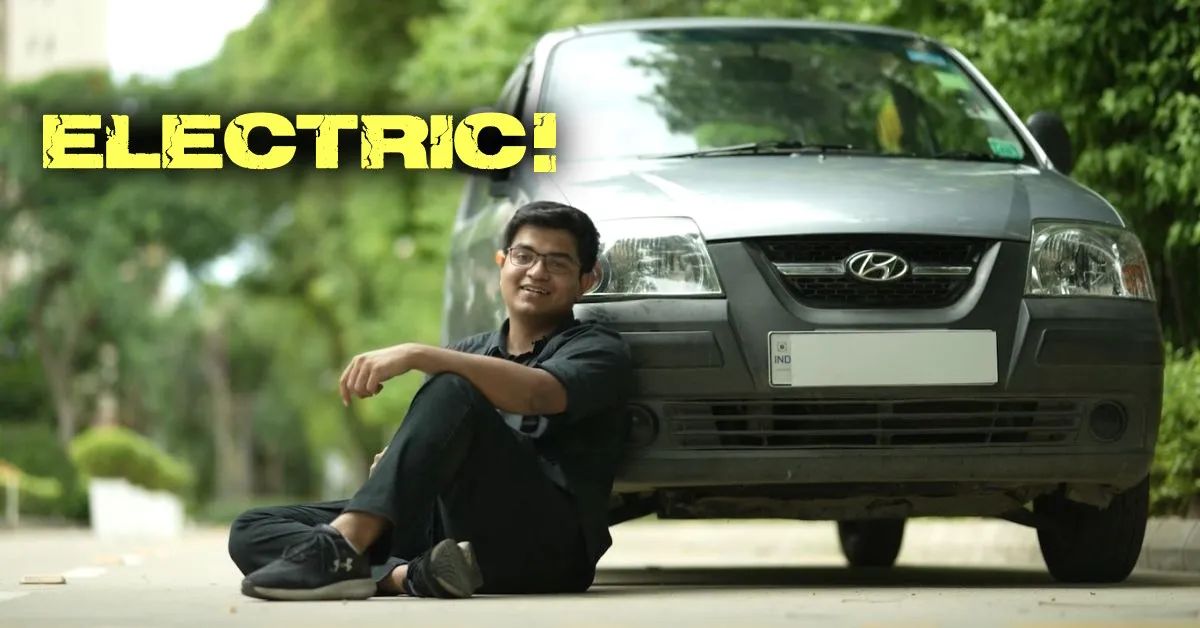Hyundai Santro Xing Converted Into An EV In 3 Days At Just Rs. 2.4 Lakh [Video]


In the last five years, we have seen the popularity of electric vehicles rise in India. Several new brands have entered the EV space to explore this growing market. Many people are now considering electric vehicles because they are regarded as more economical in the long run, due to lower running and maintenance costs. While car manufacturers are investing heavily in developing new EVs, some institutions are working on conversion kits. Here, we have a video featuring an individual who successfully converted his Hyundai Santro hatchback into an electric car in just three days.
The video was shared by Making With Mihir on their YouTube channel. In the video, we see Mihir, who converted the Hyundai Santro into an EV. He discusses the conversion project and mentions that the Santro Xing he used for this project belonged to his grandfather.
In the video, Mihir explains how he converted the petrol-powered hatchback into an electric vehicle in just three days. He talks about the entire process and the modifications he made to the car to convert it into an EV. He describes it as the “strangest yet simplest way” to convert an internal combustion engine (ICE) car into an electric vehicle.
Mihir also shows a model of an internal combustion engine to help people understand how his conversion was executed. By removing the engine completely, he would have needed additional motors to power the steering and air conditioning, which would have complicated things and not provided a clean look under the bonnet. He was searching for a simpler alternative—and he found one.
To solve the issue, Mihir removed half of the engine and left the pistons intact. He then fabricated a mount that is placed over the cylinders, with an electric motor installed on it. This new electric motor works seamlessly with the existing air conditioning and power steering setup.

As this was Mihir’s first project of this kind, he enlisted the help of an experienced mechanic. They removed the engine entirely for ease of access. The car now uses a 6 kW, 72V BLDC motor connected to a 350A Kelly Controller. Since this is an aftermarket kit, the battery is installed in the boot of the Santro Xing.
The charging port is located where the fuel cap used to be, as the fuel tank has been completely removed from the car. The Santro EV uses a 72V 100Ah Lithium Ferrophosphate (LFP) battery. An electric brake booster vacuum pump is also installed to improve braking performance.
Additionally, they installed a 72-12V DC-DC converter to step down the 72V from the LFP battery in the boot to 12V, which powers the lead-acid battery for the central locks, power windows, and lights. The electric Santro has a top speed of 60 km/h and a driving range of 80-90 km, which is sufficient for city driving. The running cost of this Santro EV is Rs 1 per km. Mihir mentions that he spent nearly ₹2.4 lakh on this project and it took him three days to finish it.